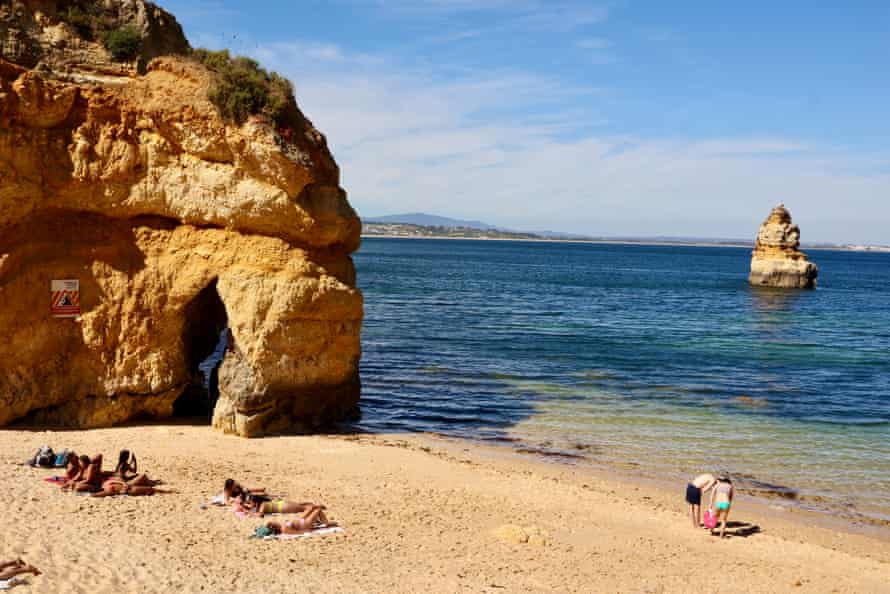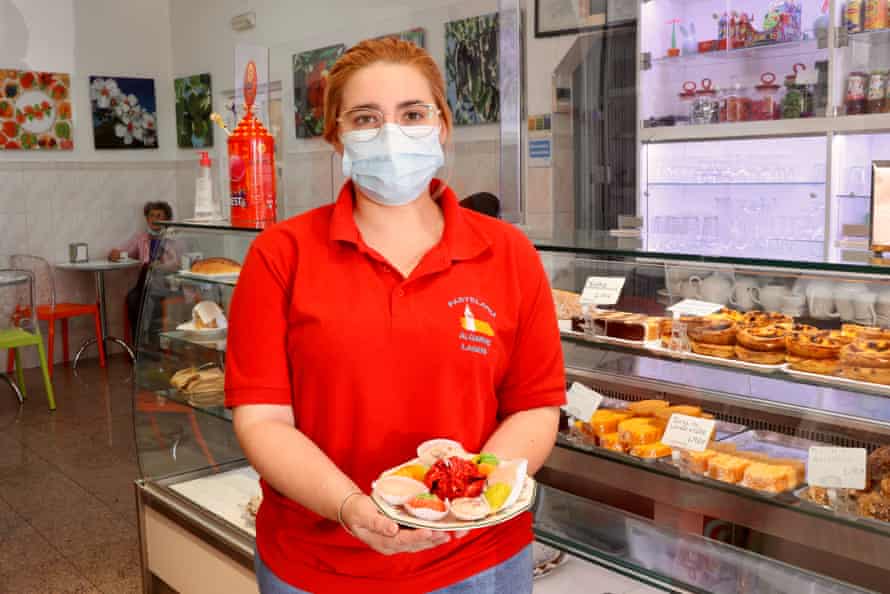Part One. The End. I’m standing at the head of the check-in queue for my easyJet flight back to the UK from Portugal. I’ve just been told that I have not got the correct documents. The receptionist does not know, but I am diving down a warren of holes, very dark holes of memory, all containing a predator in uniform, shouting at me: “Your papers are not in order!” Some of them are drunk, aggressive and heavily armed. Not the easyJet lady; she’s friendly, sober and, I strongly suspect, unarmed.
I thought I had jumped every hurdle: I had filled out an online UK government travel declaration (unnecessary), I had taken a Covid-PCR test before I travelled and then two more while in the Algarve (one more than necessary, as it turns out). Now I have a nerve-shredding race to tap my way through several online UK government forms before the check-in closes.
Let’s make this clear. You need a PCR test within 72 hours of your flight out (shop around, prices vary); you need a Covid antigen test 24 hours before you fly back (my hotel booked it and I paid €25); and you must complete something called the Passenger Locator Form which will lead you to book a PCR test done within 48 hours of arrival back in the UK (you are offered choices and prices vary). I strongly recommend you do this before you leave home, on a full-size keyboard, and with loads of time.
Eventually, with thumbs in lockdown and phone feverish, I fly home.

Part Two. In the beginning there was Luton airport. I had my PCR result, negative, printed out ready. I boarded the flight to Faro. Very smooth.
Part Three. The Algarve middle bit. The small boat putters forward, leaving the harbour at Lagos behind and setting out along the line of red cliffs known as The Grottoes, a labyrinthine array of sea stacks, arches and tiny beaches, many accessible only from the sea. In a normal season, the more reachable ones would be busy, but not now. I promise myself I will go there and swim through an arch, maybe even hire a kayak and explore (there is also a tremendous 140-mile coastal path, The Fisherman’s Trail). The sun is high, the sky is pure blue, the sea is green.
“It’s early in the season,” Nuno Oliveira, dive manager at WeDive Lagos, is telling me. “As we move into summer, the water temperature will head up to 24C and we’ll get better visibility and bluer water.”
We reach the headland marked by the lighthouse of Ponta da Piedade and turn west. Our dive site is called Paredes de Porto de Mós, a rock wall that lies between 12 and 16 metres down. Everyone starts getting ready. I’m diving with Arlindo Serrão from Portugal Dive who knows almost every dive site in the country, including the caves. “Portugal has amazing diving,” he says. “But no one comes here just to dive. We get a lot of beginners and divers who want topside attractions.”

I nod. I like topside attractions, and every time I dive I feel like a beginner. “Where does that bit go? Could you just remind me how … I’m sorry, I’m being useless.”
Nuno shakes his head. “No problem. We get clients who can’t swim, who haven’t even been in the sea before.”
“How is that possible?”
He shrugs. “The buoyancy jacket controls your level and you can breathe underwater. The instructor is with you constantly. They usually just sit on the bottom and watch fish. They love it.”
Now it is my turn. I step out and hit the water. Arlindo and the others join me. We descend on the anchor rope to 16 metres. Luana, our dive leader, sets off, pointing out the wildlife – lots of it: a massive conger eel in a hole, lobsters, crabs, a moray eel and gangs of nudibranchs – what Arlindo calls “diving slugs”, but these are slugs designed by Salvador Dali: plumed, feathered and brilliantly colourful. I fold my arms across my chest and settle myself. Diving done well is a meditative experience; no sound but your own breath in a world where you are an alien visitor from a different cosmos.

The Algarve is all about the sea. Burrow into any family history and it leads to fishing; delve into any coastal town or village and the life is in the harbour. Earlier that day I’d gone down to Lagos harbour and the fishermen had directed me to their favourite restaurant, Tasca da Lota, the one where they have coffee at six in the morning and where you can eat the sardines they caught. But one grizzled old-timer warned me, “Not today, no sardines. The tuna and dolphins arrived and the sardines were hiding.”
So instead I went over to the old town of Lagos, a maze of white houses and churches that escaped the worst excesses of tourism development, a blight in some parts of the Algarve. The town is quiet with only a few intrepid tourists around. Lagos never gets as crowded as some parts of the region, but to have it so peaceful is a boon. Arlindo is in heaven: “This is like when I was growing up, before the 1974 revolution.”

That morning I needed dive energy so I settled for another local delight: traditional cakes and coffee at Pastelaria Algarve. Here they make delicacies like estrelas de amendoa, stars of almonds and fig, and doce fino, which look like slices of watermelon or little clams but are actually almonds, sugar and eggs. Then there is the pièce de resistance, Dom Rodrigo, a stringy ball of egg, cinnamon and sugar wrapped in silver foil. Brimming with sugar, I was ready to dive.
Twelve metres down, Luana leads us back to where we started: the anchor. I pause and look around. I’m not going to do another dive, so these are my last few moments in the magical other ether. Something catches my eye: a curly scarlet sponge inside a hollow, and there next to it, an octopus. My face is a foot away from the animal. I love and respect these well-armed creatures. They solve problems, they can change colour to elude predators, and they can escape down tiny dark holes to escape from aggressive predators. The octopus stares back at me, its eye pale, and clouded with octopi ponderings. Then it winks.





